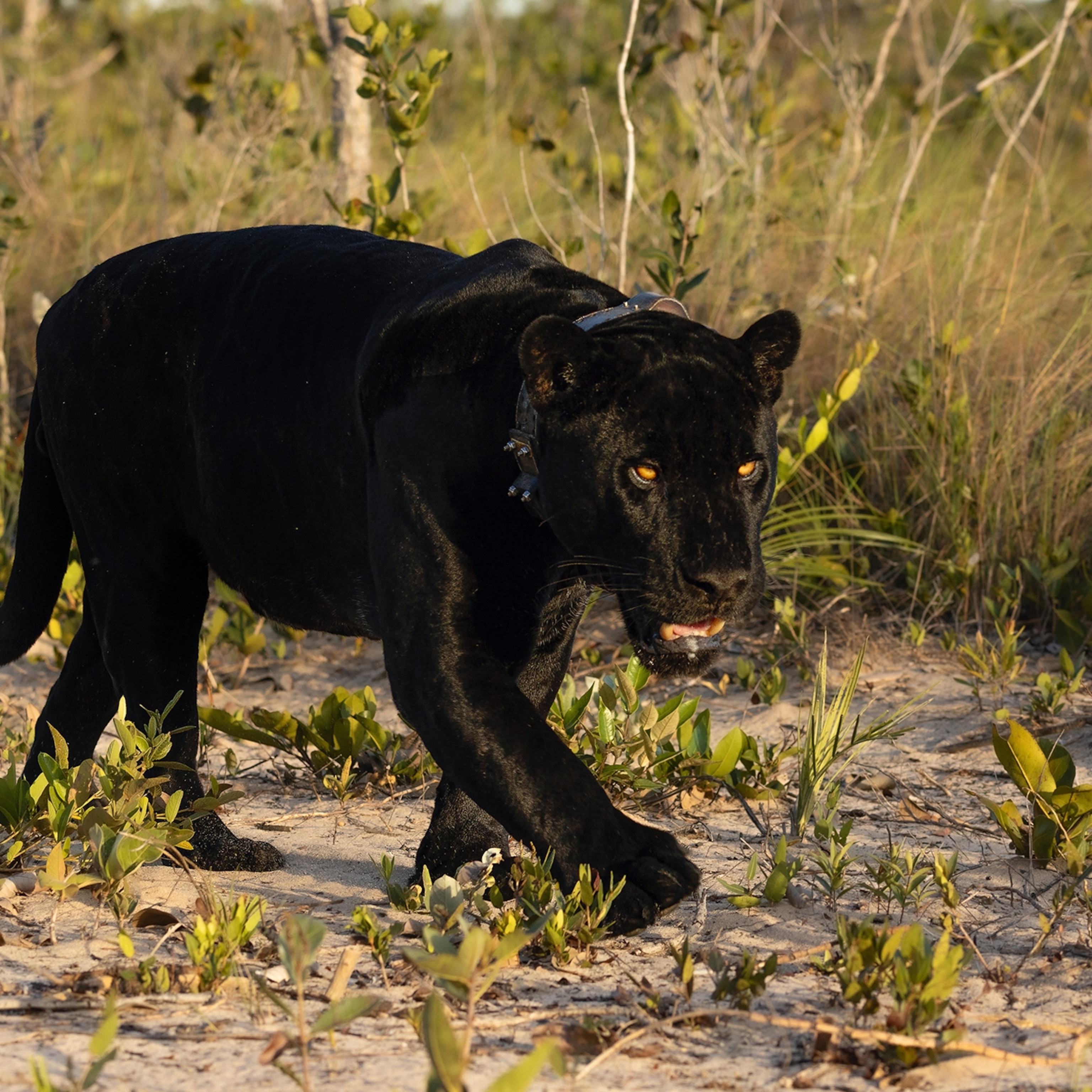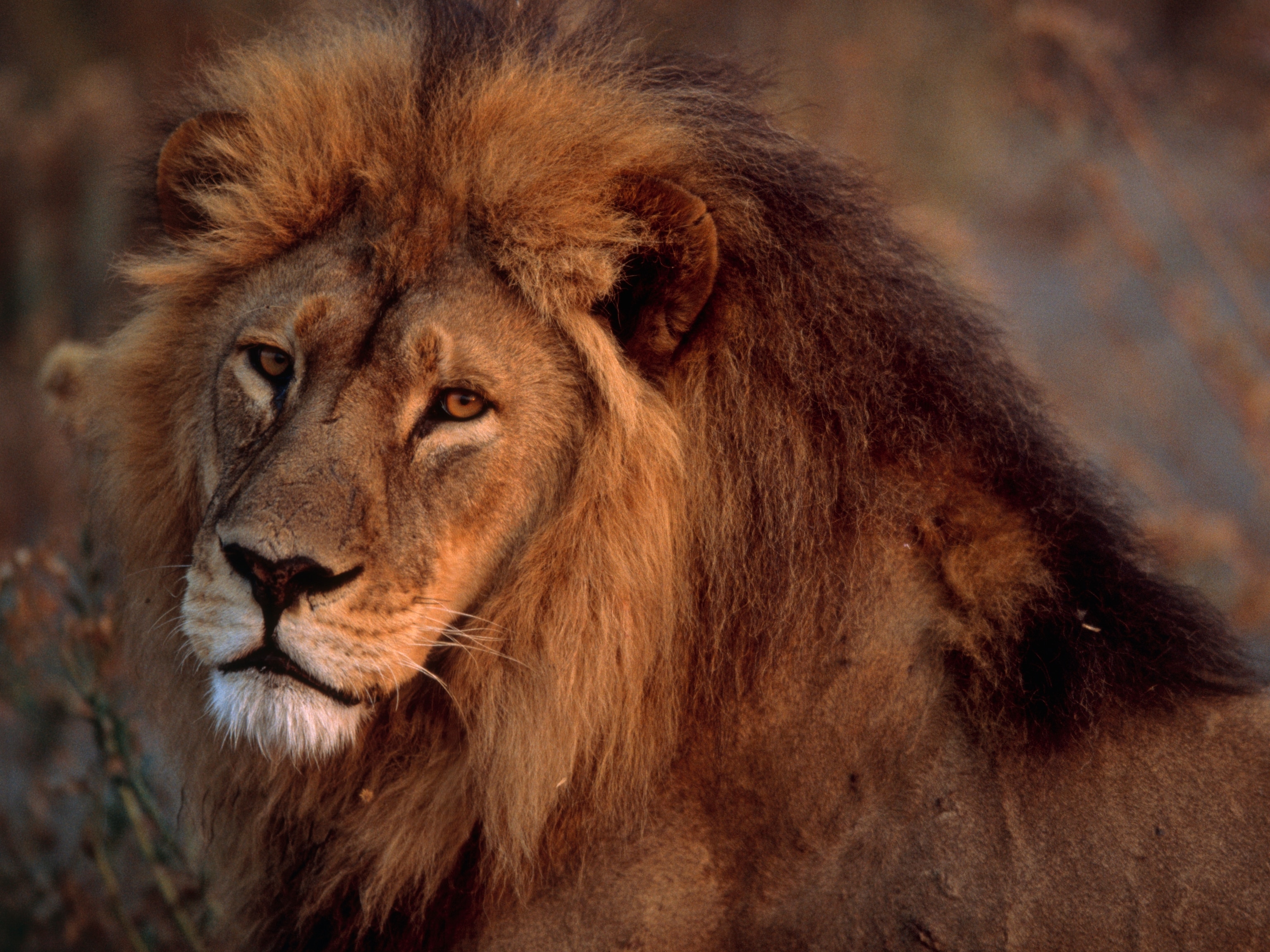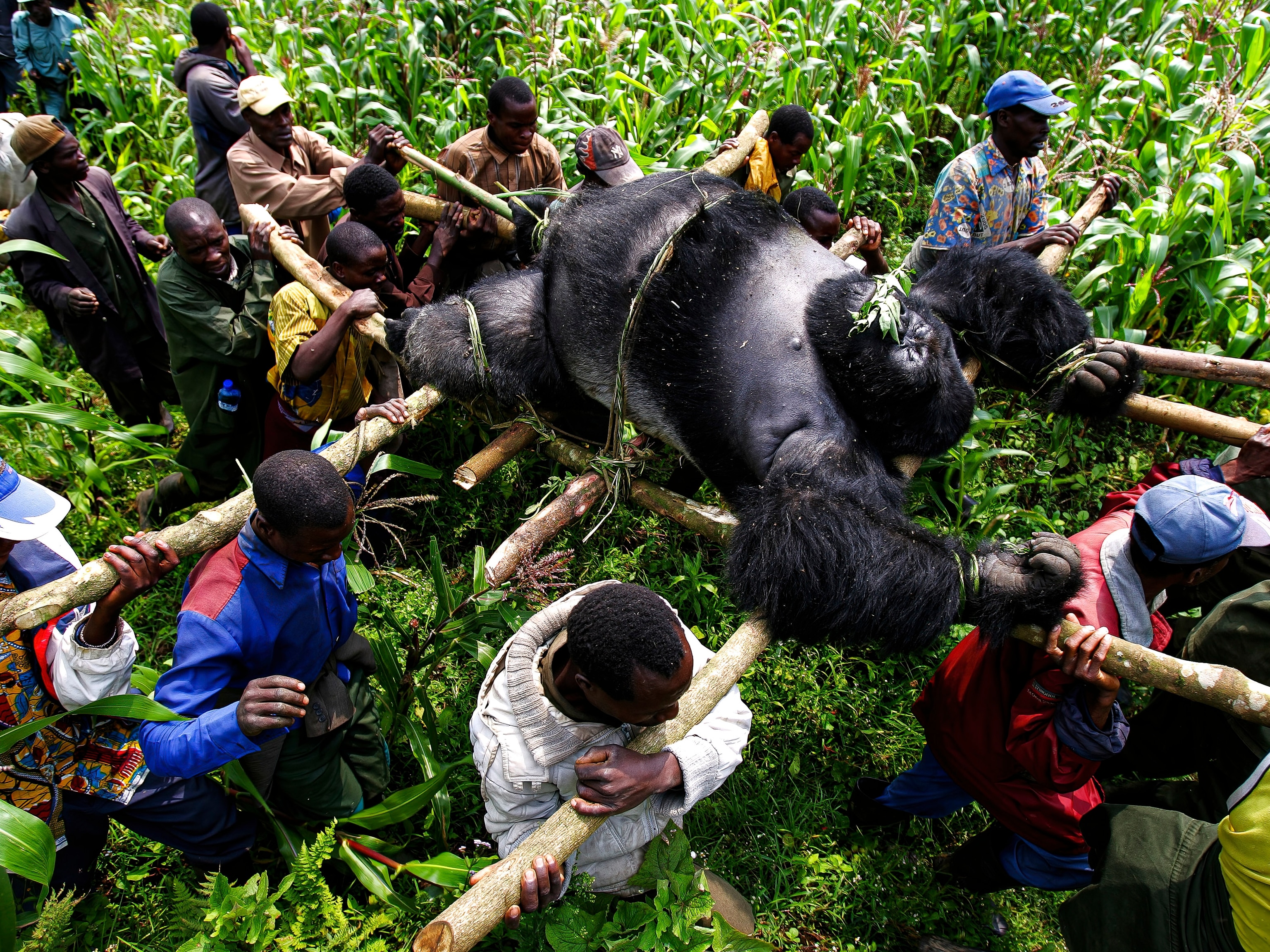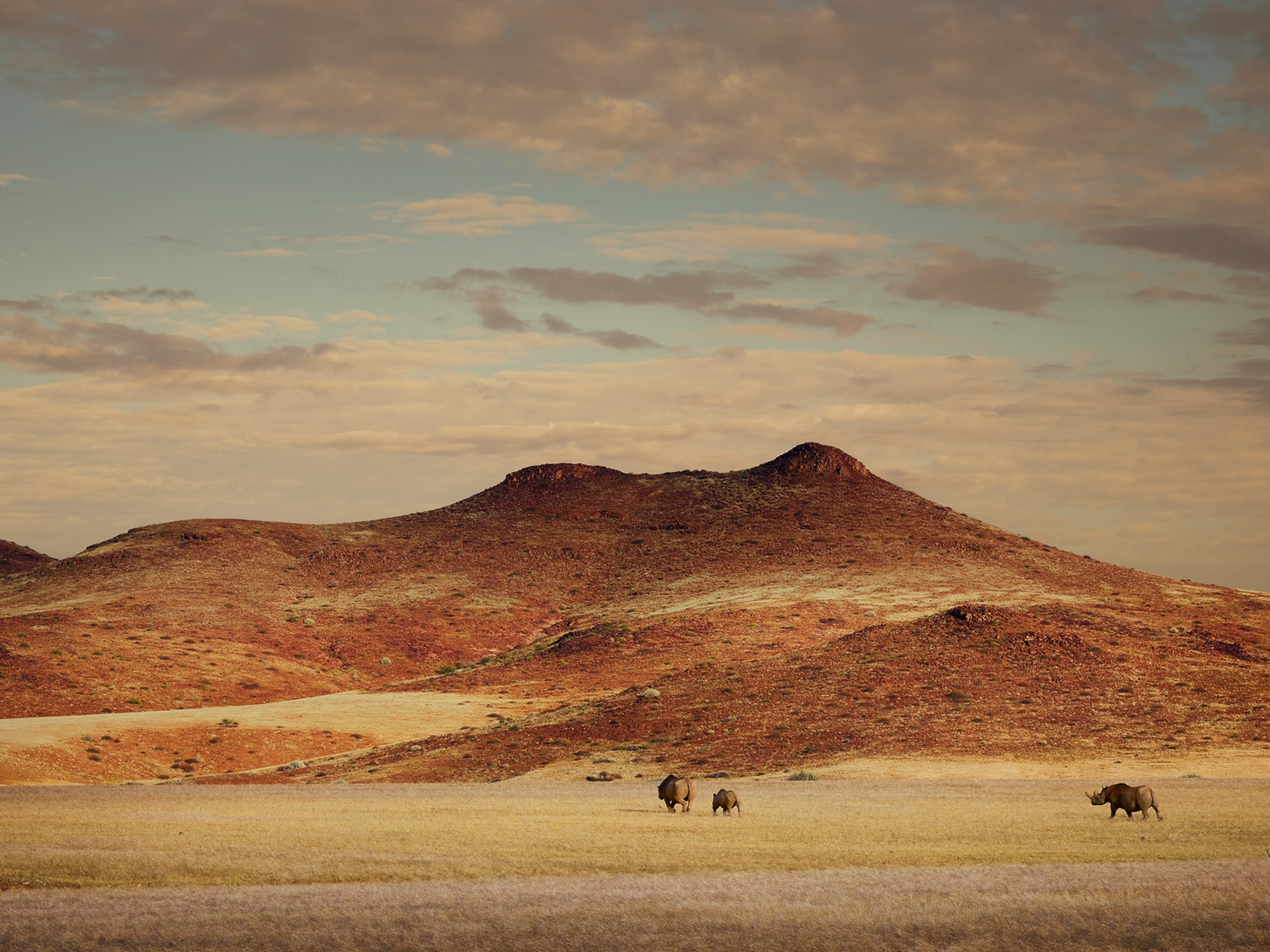Pronghorn Revival: Restoring an American Icon
In just three days, a research team captures and transports more than a hundred pronghorns to revive a dwindling herd in West Texas.
“It’s pretty much an alien abduction,” Thomas Janke, a wildlife biologist, explained. Janke joked to me that the pronghorns don’t know what’s happening as they’re humanely translocated to their new range.
“A massive twirling flying machine from a foreign species chases you until it’s directly on top of you. There’s a loud bang, and wham, your legs are caught up and you can’t run—which is your only defense. The contraption lowers to the earth and an animal that runs on only two legs sprints over, tackles you, handcuffs you, and injects you with a drug. Your senses dull as the two-legged animal wraps you in an unfamiliar bag, ties a rope to it, and signals to the twirling machine. It lifts off the ground, taking you with it, and flies you to a test station, where you’re laid on a table. Your DNA is collected, stool samples are taken, and blood is drawn before you’re put in a dark holding facility and transported to a foreign landscape.
“Twelve hours later, just as the drugs are wearing off and you’re coming back to your senses, the holding facility doors open into an alien place. The two-legged animals quietly mutter,'Live long and prosper!'”
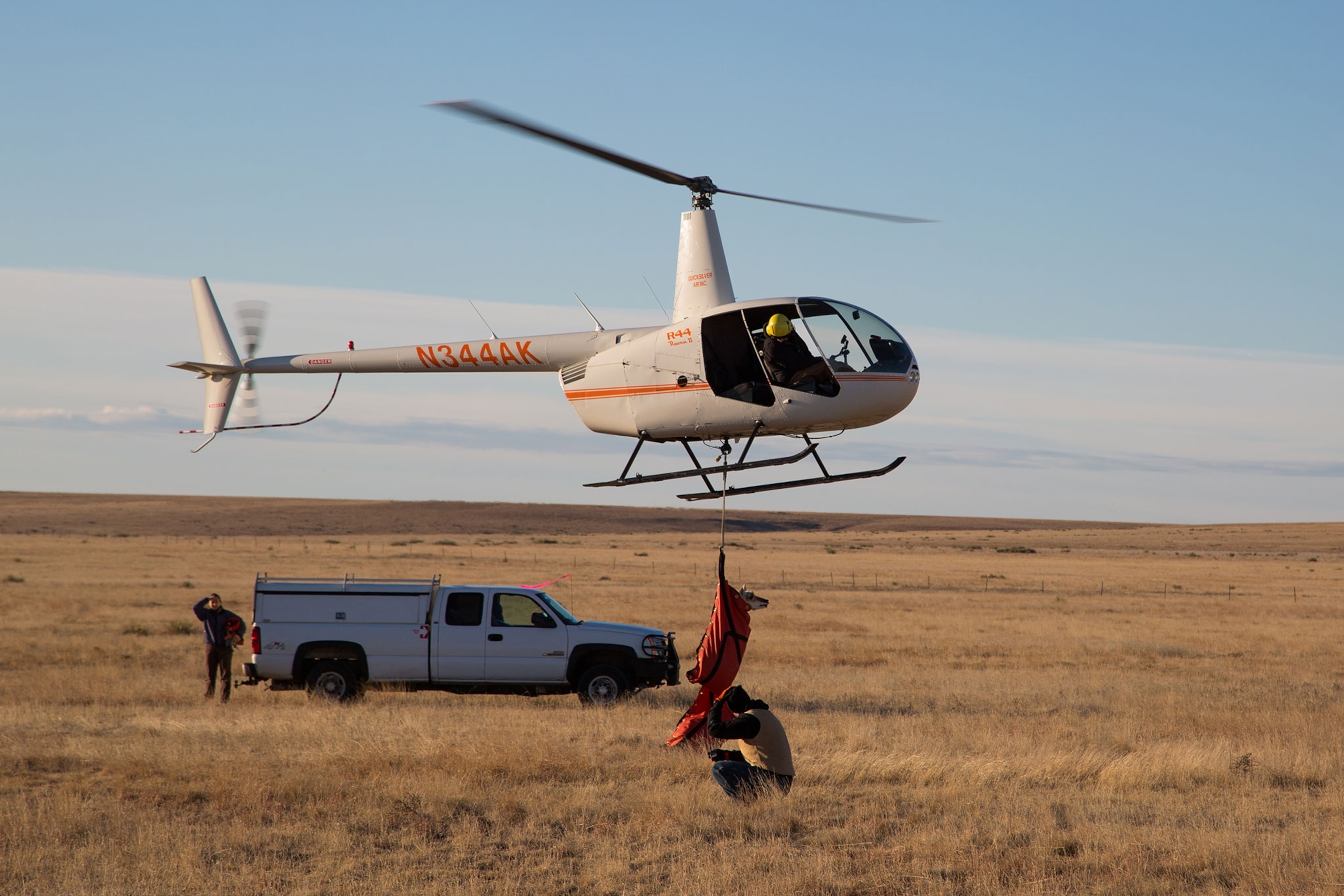
The West Texas pronghorn population has crashed. In the 1980s, there were approximately 17,000 animals. Drought, habitat fragmentation, and a nasty parasitic worm formed a lethal combination that devastated the herd to a low of only 3,000 animals in 2013. In January of 2016, the Borderlands Research Institute, Texas Parks and Wildlife, and private landowners set out to capture more than a hundred pronghorns from an abundant herd in the Texas Panhandle and translocate them 500 miles to revive a dwindling herd near Marfa, Texas.
The process is simple—in theory. The helicopter pilot flies across the Panhandle plains until he locates a herd. The pilot positions the chopper about 30 feet above the pronghorns—the fastest land mammal in North America—which are now running hell-bent. When positioning is perfect, a gunner behind the pilot fires from the hip an eight-foot-by-eight-foot net with a pistol-like .308. If successful, the pronghorn’s legs get tied up in the net. The chopper lands and a third person, the mugger, tackles the pronghorn, injects it with a calming drug called Haldol, and wraps the pronghorn into a special carrying bag. The bag is secured to the helicopter and flown to a nearby processing facility in Dalhart, Texas.
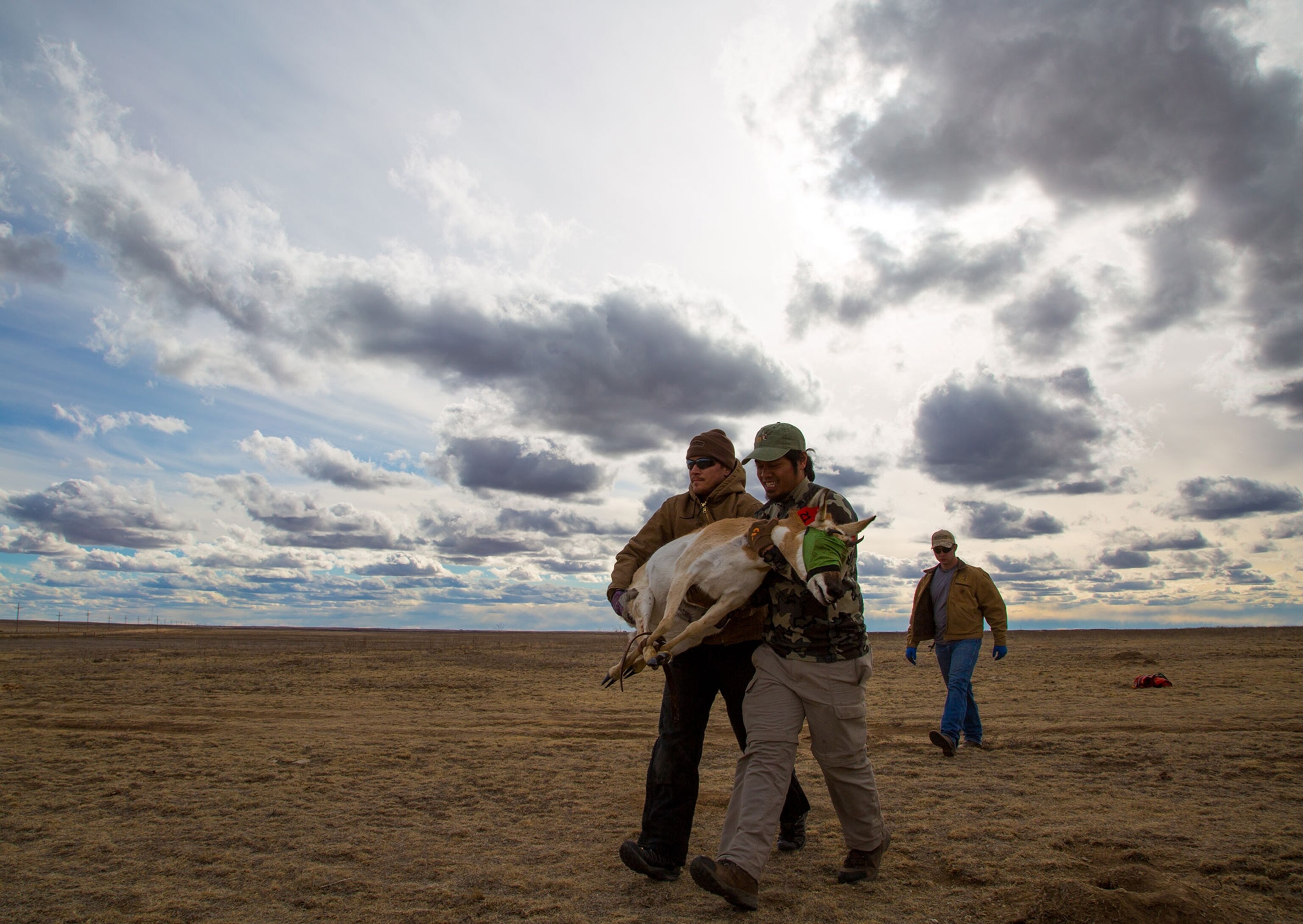
Vets, biologists, and approximately 30 students from Sul Ross State University in Alpine, Texas, wait for the pronghorn to arrive. As soon as the helicopter places it on the ground, teams of two people run out, grab and blindfold the animal, and hurry it to a processing table where they collect hair, blood, and fecal samples. The pronghorn is medicated and given a GPS collar and ear tag.
Throughout the process, the pronghorn may overheat, so students put cool water on the stressed pronghorn’s armpits and belly to help keep its temperature low. Pronghorns are also offered a drink, which most of them accept. The entire process takes about two minutes before the pronghorn is loaded onto a trailer with a padded hay floor for the animal’s protection.
As soon as the trailer is full of pronghorns, the eight-hour drive from Dalhart to the release site in West Texas begins. Upon arrival, trailer doors are opened and the pronghorns, still groggy, step into a whole new world. They have no idea how important they’ve just become.
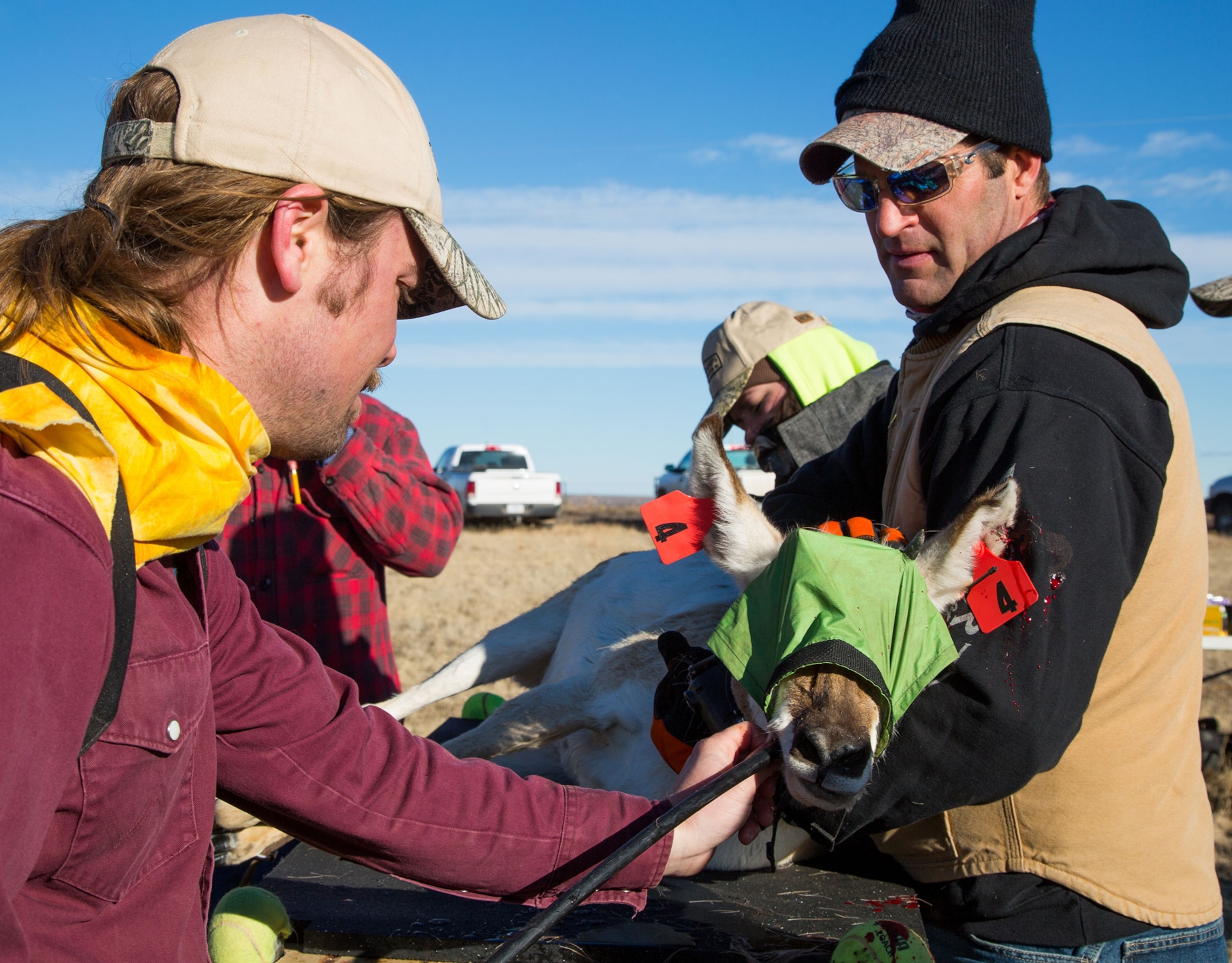
In three days, 112 pronghorns were successfully netted, processed, and transported to their new home in West Texas to reestablish an iconic species in an epic landscape. Over the entire project, there was a 5 percent mortality rate, the lowest yet for the Texas pronghorn team, and spirits were high. Abundant rainfall the previous year has given West Texas a bountiful supply of forage, and release conditions are the best in years. But the work is far from done. The students at Sul Ross State have ambitious research projects that will yield crucial data on pronghorn movement, survival rates, and forage habits, and that data will hopefully pave the way for more translocations in the future.
- National Geographic Expeditions
Toward the end of the capture I had the opportunity to interview Louis Harveson, the founder of the Borderlands Research Institute who is spearheading reintroduction efforts across West Texas. Once I got past the biologist statistics and data talk, Harveson opened up on a personal level about what reintroducing an iconic animal into its native habitat means for the ecology of that landscape and for society as a whole.
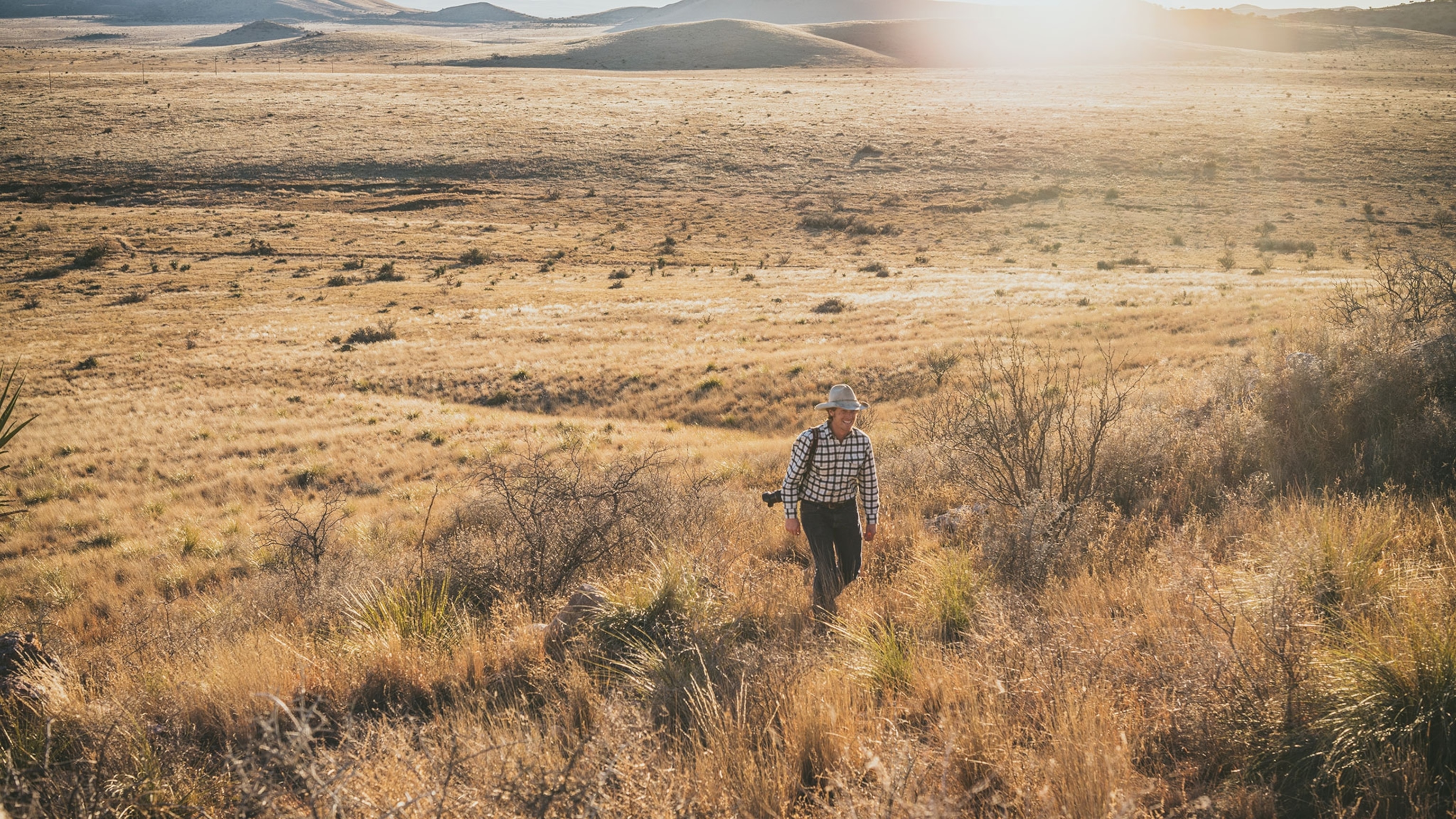
“If we bring back the pronghorns, it’s not just the pronghorns that benefit,” Harveson said. “They’re an umbrella species, and habitat for them means habitat for all the reptiles, birds, mammals, and the array of life in the Trans-Pecos. And if landowners”—who own the land where the pronghorns are released and work with biologists to create habitat—“take pride in their native animals, which they do, then those habitats have a bright future. We’re not just bringing back pronghorns, we’re conserving an ecosystem.”
Watching dozens of pronghorns step through the trailer lights and into their new home under the moonlit West Texas landscape gave me a feeling I won’t soon forget. It was a feeling of completeness, like inserting the last piece of a landscape puzzle. We live in a world where conservation success stories are hard to find, and where species are dropping off the planet at an alarming rate. To see so much support and collaboration between passionate landowners, nonprofits, and state and federal agencies is nothing short of spectacular.
Harveson and his crew have ambitious goals. Bighorns, pronghorns, bison, mountain lions, mule deer, and elk are all making a comeback in Texas. Harveson’s team is working hard so the golden age of wildlife in West Texas isn’t just a thing of the past.
